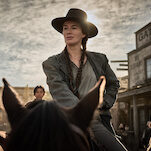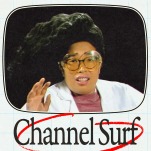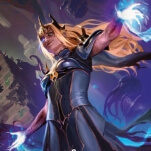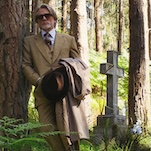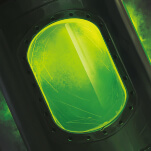Alan Rudolph’s Trouble In Mind takes place in a strange cinematic time warp that combines the writer-director’s undying affection for the mood, look, and arch stylization of ’30s and ’40s Hollywood glamour with the lurid neon, bold colors, and terrible hairstyles that characterized ’80s new-wave fashion. For instance, Rudolph conveys Keith Carradine’s descent from wholesome family man to debauched ne’er-do-well through the radical shift between his shaggy, unassuming early haircut and the insane, towering Buster Poindexter pompadour he assumes as a slick urban affectation after being roped into a life of crime and robbery by Joe Morton, a beatnik poet-philosopher hood. In Trouble In Mind, style is substance, so appearances are of the utmost importance.
Rudolph’s loving homage to Casablanca, film noir, and cinema as a whole revolves around a Geneviève Bujold-run diner through which a series of lost, lonely characters pass as they try to make sense of their lives and the choices they’ve made. Carradine and wife Lori Singer—whose beatific, otherworldly performance suggests that extreme naïveté can be a state of grace—ramble through the diner during their rocky transformation from small-town innocents to worldly city-dwellers, while Kris Kristofferson shows up at the diner to woo Bujold, who is just a little too wise to fall for his rough-hewn charm and sad eyes.
Trouble In Mind is driven primarily by music and images: Throughout much of the film, plot and characterization prove largely incidental. It’s a consummate mood piece awash in the smoky glamour of a lost era of film. A soundtrack dominated by Marianne Faithfull songs, including a spin through the title standard and a score equally dominated by Mark Isham’s lonely saxophone, go a long way toward establishing and sustaining a tone of boozy, haunted regret and muted sadness. Rudolph remains one of American’s film’s most unabashed romantics: Trouble In Mind is so sweetly, smartly, transcendently romantic that Kristofferson’s desperate need to get laid following years of nothing but male company comes off as a soulful man’s spiritual hunger for meaningful human connection, rather than mere horniness. Twenty-five years later, Trouble In Mind functions as a sultry elegy for two lost eras: a cinephile’s fantasy of the 1940s, and the Reagan era that spawned it.
Key features: a making-of documentary, a conversation between Isham and Rudolph, and liner notes from Rudolph.


